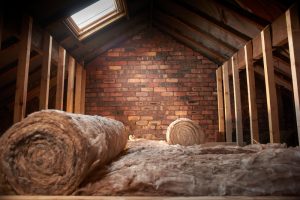Insulation is an essential part of home performance, i.e. how well your home works as a complete energy system. If you live in a house with poor insulation, it will lose heat quickly in the winter and gain it rapidly in the summer. This translates into poor comfort indoors and a need to run your HVAC system more often to stay either cool or warm.
We offer insulation service in Vidalia, GA to help ensure you have a house with the right heat sealing to enjoy better comfort and lower energy costs. In this post, we’re going to give you a short guide to how insulation is rated because you can’t just have any insulation put in the walls or the attic of your home and expect good results. Follow below and we’ll explain:
What Is R-Value?
The R-value is the primary measure of insulation effectiveness. Specifically, it represents the material’s resistance to heat flow: the higher the R-value, the more effective the insulation is at slowing down heat transfer. In simple terms, insulation with a high R-value will keep your home warmer in the winter and cooler in the summer.
Different insulation materials have different R-values, and even within a single type of insulation, thickness and density impact the R-value. For instance, fiberglass batt insulation commonly used in walls and attics can have R-values ranging from R-11 to R-38 or more, depending on the thickness and density. When choosing insulation, it’s essential to consider both the R-value and the specific needs of each area in your home.
How Much R-Value Do You Need?
The ideal R-value for your home depends on a few key factors:
- Climate: Homes in colder climates require insulation with higher R-values to handle the extreme temperature differences. In Georgia, we experience hot, humid summers and mild winters, so the recommended R-values are generally lower than in colder northern regions but still need to be effective enough to keep out the summer heat.
- Location in the House: Different parts of your home have varying insulation needs. For example, attic insulation typically requires a higher R-value than walls or floors, as a significant amount of heat can escape through the roof. Basements, walls, and crawl spaces each have their own ideal R-value range as well.
By working with an HVAC and insulation professional, you’ll get tailored recommendations for your home’s specific insulation needs, ensuring you don’t over- or under-insulate any part of your house.
Why Professional Installation Matters
Installing insulation isn’t as simple as just putting material in the walls or attic. To get the most out of your insulation and achieve the highest energy efficiency, it’s important to have it professionally installed. Professional installers understand which types of insulation work best in specific areas of the home, and they know how to achieve optimal coverage. They also ensure that insulation meets the correct R-value requirements for your climate and home structure.
Without proper installation, even high-R-value insulation can fail to perform as expected. Gaps, compressions, and other installation errors can significantly reduce the insulation’s effectiveness, leading to uneven temperatures, drafts, and a less energy-efficient home overall.
If you’re ready to improve your home’s insulation or have questions about the right R-value for your home, contact us today. We’re here to help you enjoy a cozier, more efficient living space.


